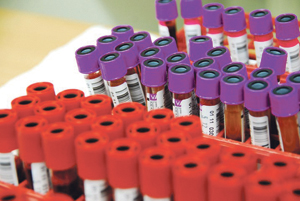Preserving Blood – Why we need to look at new options
Blood transfusions have been used successfully since the early 1900s, and blood banks have been in use since 1914. After donation, whole blood is separated into several components for processing and storage under different conditions, and one of these components is the red blood cell fraction.
The preservation method typically used for red blood cells is refrigeration, and this currently has an accepted shelf life of 42 days. Recent studies however, indicate that this shelf life is too long, and after two to three weeks the cells begin to lose efficacy.
 How freeze drying is enabling improvements
How freeze drying is enabling improvements
Freeze drying potentially offers a long term storage solution for red blood cells without requiring refrigeration and allows rapid reconstitution of the lyophilised product at the point of use, making the freeze dried form suitable for use in both clinical environments and trauma sites. However red blood cells are challenging entities to lyophilise, proving sensitive to various types of structural, oxidative and chemical damage during both freeze drying and the subsequent rehydration processes. Research performed by Biopharma Group‘s independent research and consultancy division BTL in collaboration with the University of Cambridge achieved a survival rate of 96% when freeze drying and rehydrating red blood cells, using a specially selected preservative formulation containing trehalose whereas the level of Haemoglobin oxidation was at 60%, meaning overall the process was not viable.
T +44 (0)1962 841092
btl@biopharma.co.uk
www.biopharma.co.uk
